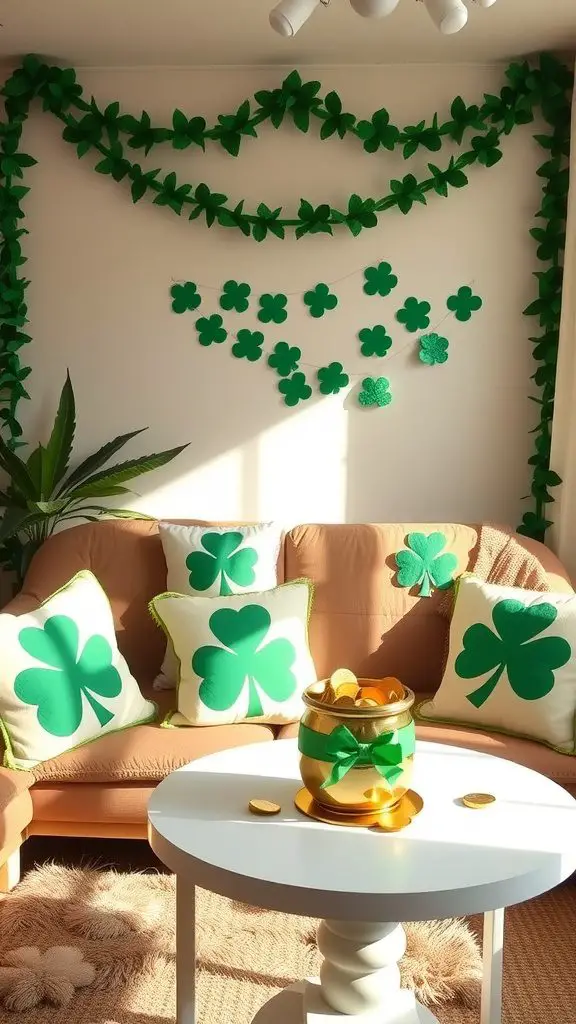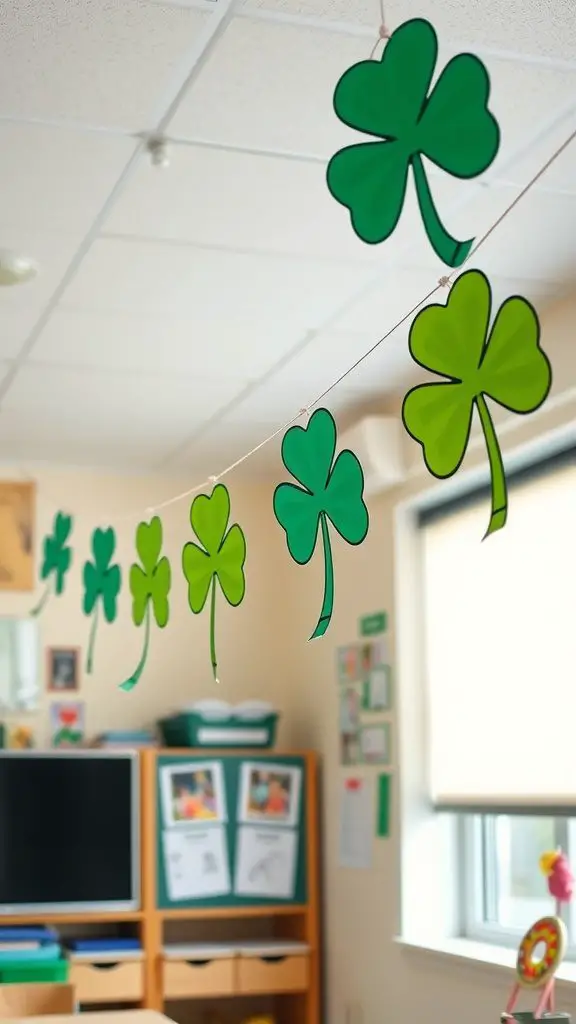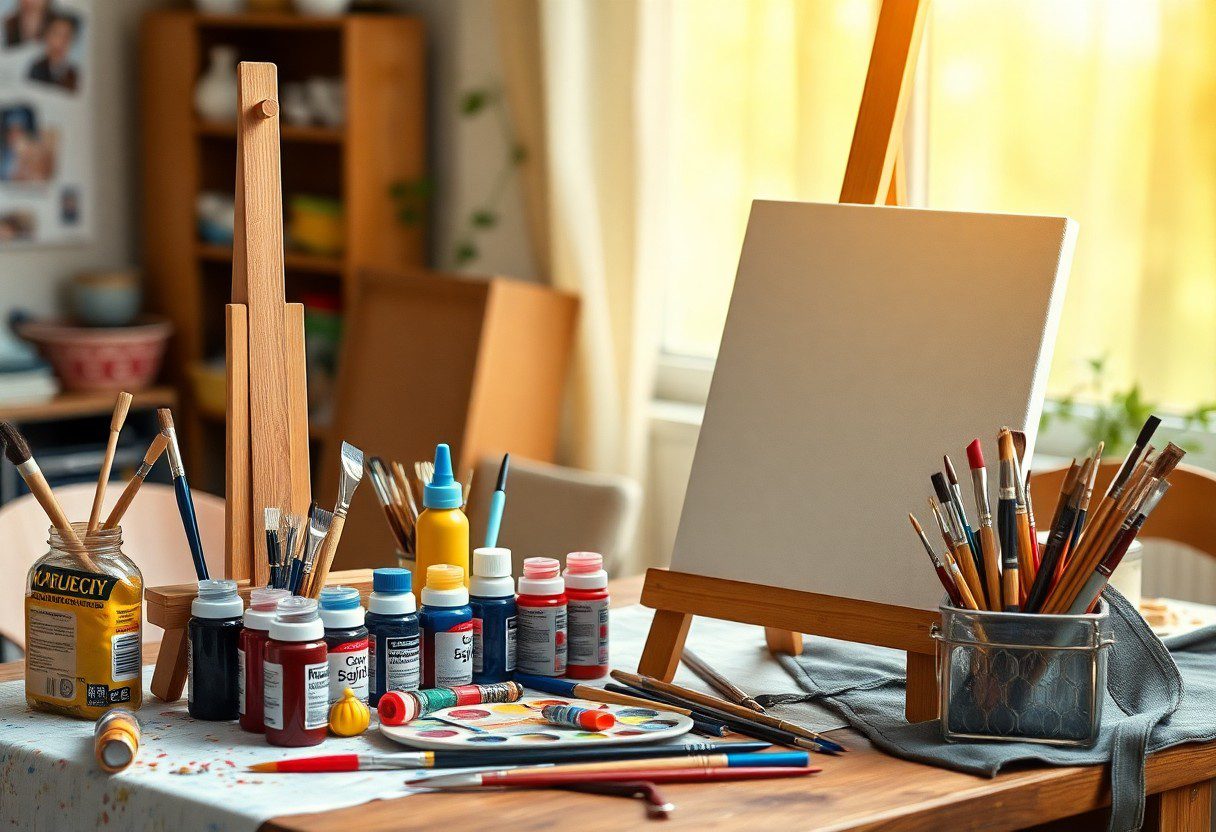DIY portrait painting can be a rewarding and fulfilling creative outlet, but selecting the right materials doesn’t have to break the bank. To help you get started without stretching your budget, this guide will introduce you to affordable yet high-quality supplies that will enhance your painting experience and results. You’ll discover necessary tools and materials that not only fit your wallet but also inspire your artistic journey. Let’s investigate the world of budget-friendly options that will elevate your portrait painting skills!
Essential Materials
While begining on your portrait painting journey, having the right materials will set the groundwork for your success. Key items include high-quality canvas or canvas boards, a versatile selection of paints, various brush types, palettes for mixing colors, and easels to support your work. Opting for budget-friendly options ensures you stay on track without compromising quality, allowing your creativity to flourish.
Paint Selection
Among the popular choices for beginner portrait painters are acrylics and watercolors. Acrylic paints are fast-drying and versatile, perfect for layering techniques, while watercolors offer a softer, translucent finish. Both options are affordable and readily available, allowing you to experiment without overspending. Be sure to choose primary colors to mix a broader palette.
Brush Types
Before venturing into your painting, understanding different brush types will enhance your technique. You’ll find flat brushes, round brushes, and filbert brushes among your options, each serving unique purposes. A flat brush excels in broad strokes, while a round brush allows for detail work. Filbert brushes combine both features, ideal for blending edges. Having a selection is beneficial, so invest in a few quality pieces.
| Brush Type | Function |
| Flat Brush | Broad strokes and washes |
| Round Brush | Detail work and fine lines |
| Filbert Brush | Blending and soft edges |
| Fan Brush | Texture and foliage effects |
| Detail Brush | Intricate designs |
This variety ensures you have the right tools for each aspect of your painting. Flat brushes create sharp lines, while round brushes are perfect for contours and intricate areas. Filbert brushes will assist in softer blends, making them versatile for various techniques. Investing in these different types will allow you to expand your artistic capabilities and achieve your desired outcomes.
- Choose brushes suited for acrylic or watercolor based on your painting medium.
- Consider synthetic brushes for affordability and ease of cleaning.
- Invest in a mix of sizes to accommodate various strokes.
- Look for brushes with durable handles to enhance your control.
- After exploring options, you’ll find your perfect set with practice.
| Brush Size | Recommended Use |
| Small | Detailed work and fine lines |
| Medium | General painting and medium strokes |
| Large | Backgrounds and washes |
| Flat | Wider strokes and filling in areas |
| Round | Detailing and blending colors |
Surfaces for Portrait Painting
It’s necessary to select the right surface for your portrait painting to achieve the desired effect and longevity. Whether you prefer traditional canvas or more modern options, the surface can significantly influence the outcome of your artwork. Understanding the pros and cons of each material will enhance your painting experience and lead to stunning results.
Canvas Options
Between pre-stretched canvases and canvas boards, you have various choices to suit your budget and style. Pre-stretched canvases are ready to use and come in various sizes, while canvas boards provide a lightweight alternative that’s easy to store. Consider your workspace and transport needs when making your choice.
Paper and Other Alternatives
At a fraction of the cost of canvas, painting paper can be an excellent choice for portrait painting, offering versatility and ease of use. You can find specialized papers designed specifically for acrylic or watercolor paints, ensuring compatibility with your chosen media.
Also, working with paper allows you to experiment with different techniques without the commitment of a canvas. Additionally, you might consider wood panels or even fabric for a unique twist on traditional portrait painting surfaces. Each option has its distinctive texture, enabling you to find one that enhances your artistic vision while remaining kind to your budget.
Budget-Friendly Tools
Clearly, investing in quality tools doesn’t have to break the bank. You can find a variety of budget-friendly options that still deliver impressive results in your portrait painting journey. From brushes to palettes, you’ll be amazed at how affordable yet effective these tools can be, helping you create stunning artwork without stretching your finances.
Palette and Mixing Tools
By choosing items like disposable palettes, old plates, or even wax paper, you can save money while ensuring an efficient mixing experience. You don’t need an expensive palette to achieve vibrant results, and everyday materials can often be just as effective for blending your paint. Be resourceful and creative with your palette choices!
Easels and Supports
With a little ingenuity, you can find versatile and budget-friendly easels and supports that work perfectly for your portrait painting needs. Instead of investing in a pricey easel, consider alternatives like making a simple tabletop easel from scrap wood or utilizing sturdy clipboards to hold your canvas. These methods provide stability and ease of use while fitting within your budget.
The beauty of DIY portrait painting lies in the ability to adapt your workspace creatively. A simple homemade easel or a repurposed item can serve as a stable support for your canvas. Whether you use a wall-mounted setup or create a portable option with household items, you can achieve the desired angle and height for your painting. Making use of everyday materials allows you to focus more on your art rather than worrying about the cost of specialized equipment.
Affordable Alternatives
All artists can benefit from exploring budget-friendly alternatives to traditional portrait painting materials. Instead of investing in expensive supplies, consider using affordable options that provide similar results. From homemade materials to thrifting treasures, you’ll discover creative solutions that keep your wallet intact while enhancing your artistic journey.
Homemade Materials
After you realize how easy it is to make your own art supplies, you’ll feel empowered to experiment with your creativity. You can create your own paints using simple ingredients like flour, cornstarch, or natural pigments, allowing you to customize colors while saving money. Additionally, repurposing old items as canvases can further reduce costs and spark innovative ideas.
Thrifting for Success
Any trip to a thrift store can yield unexpected treasures for your portrait painting projects. You can find not only affordable canvases and frames but also unique tools that can inspire new techniques. By keeping an open mind, you may stumble upon vintage brushes, easels, or even unusual materials that can elevate your artwork without breaking the bank.
Affordable finds at thrift stores can revolutionize your art supplies. Scout for items like furniture that can be repurposed into canvases or discarded household items that can serve as unique tools for texture or application. The charm of thrifting lies in the experience of uncovering hidden gems while staying within your budget. Plus, each piece you discover carries its own story, adding character to your artwork.
Tips for Saving Money
Despite the costs often associated with art supplies, there are numerous ways you can save money without sacrificing quality. Consider these tips:
- Set a monthly budget for your art supplies.
- Take advantage of seasonal sales and clearance events.
- Utilize coupons and cashback offers.
- Join local art supply groups for shared discounts.
The more strategic you are in your purchasing, the more you can focus on creating your portrait paintings.
Where to Shop
Across the internet and local neighborhoods, many options exist for budget-friendly art supplies. Local craft stores often offer discounts, while online retailers frequently have sales on specialized items. Don’t forget to check thrift stores or garage sales for unexpected finds that can inspire your next masterpiece.
Bulk Buying Strategies
By buying materials in bulk, you can significantly reduce your overall costs. Consider purchasing larger quantities of paint or canvas, as these often come at a lower per-unit price.
Also, consider teaming up with fellow artists to share bulk orders, which can help you access even more substantial discounts. Many suppliers offer wholesale pricing for larger purchases, so pooling resources can lead to greater savings. Always keep an eye out for local art co-ops or community groups as they often offer bulk buying options that benefit all members.
Techniques for DIY Portraits
Now that you have your materials ready, it’s time to investigate the techniques that will help you create stunning DIY portraits. Mastering these skills will elevate your artwork, allowing you to capture the essence of your subject. Focus on layering, blending, and color mixing to bring depth and life to your portraits, ensuring your creativity shines through in every brushstroke.
Layering and Blending
Among the most necessary techniques in portrait painting is layering and blending. Start with a base layer to establish your form and gradually build up additional layers for depth. Utilize a soft brush to blend colors seamlessly, creating smooth transitions in skin tones and textures, which will enhance the realism of your portrait.
Color Mixing and Matching
Above all, mastering color mixing and matching is key to achieving lifelike skin tones. You want to understand the basics of color theory to create a range of hues that reflect your subject’s unique features. The right palette will bring your portrait to life, so take the time to experiment with combinations until you achieve the perfect blend.
And don’t shy away from using a color wheel to guide you in mixing complementary hues. By mixing primary colors with small amounts of red, yellow, or blue, you can create a variety of skin tones and undertones. Keep adjusting and testing on your palette until you find the right mix to represent your subject accurately. This trial-and-error approach will not only improve your skills but also boost your confidence in color application.
Conclusion
Ultimately, with budget-friendly DIY portrait painting materials, you can unleash your creativity without breaking the bank. By selecting affordable supplies like student-grade paints, mixed-media papers, and versatile brushes, you can create stunning artwork that reflects your style. Investing in these economical tools empowers you to experiment and hone your skills, all while enjoying the process. So gather your materials, embrace your artistic side, and enjoy the fulfilling journey of portrait painting with confidence!
FAQ
Q: What are crucial materials needed for budget-friendly DIY portrait painting?
A: Essential materials include a canvas, acrylic or watercolor paints, brushes of various sizes, a palette for mixing colors, and a cup of water for cleaning brushes. You can also use inexpensive alternatives like recycled cardboard or paper as canvases and craft paints instead of artist-grade paints for a more budget-friendly approach.
Q: Where can I find affordable supplies for portrait painting?
A: Affordable supplies can often be found at local craft stores, discount stores, or online retailers like Amazon and eBay. Additionally, consider visiting thrift stores or garage sales for second-hand art materials. Many stores also offer sales or coupons that can help you save money on your purchases.
Q: Are there any good substitutes for professional-grade paints?
A: Yes, many artists use student-grade paints or craft paints as budget-friendly substitutes. Brands like Liquitex Basics and Blick Studio offer high-quality options at lower prices. Additionally, you can mix colors to create your own shades, allowing you to minimize the number of paints you need to buy.
Q: Can I create a portrait painting without an easel?
A: Absolutely! You can paint on a flat surface such as a table or a countertop. If you prefer an upward angle, try propping your canvas against a wall or using a sturdy box to elevate it. Being creative with your setup can make the process more comfortable without the need for an easel.
Q: What techniques can I use for a beginner-friendly portrait painting?
A: For beginners, consider starting with simple techniques such as the block-in method, where you sketch out basic shapes and colors before adding details. Use larger brushes for broader strokes and gradually switch to smaller brushes for finer details. Blending colors on your palette and experimenting with layering can also enhance your painting without requiring advanced skills.




